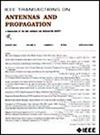Prediction of Electromagnetic Field Exposure at 20–100 GHz for Clothed Human Body Using an Adaptively Reconfigurable Architecture Neural Network With Weight Analysis (RAWA-NN) Framework
IF 4.6
1区 计算机科学
Q1 ENGINEERING, ELECTRICAL & ELECTRONIC
引用次数: 0
Abstract
In the context of forthcoming sixth-generation (6G) wireless communication, the sub-terahertz and terahertz frequency spectrum are anticipated. At such high frequencies, electromagnetic field (EMF) exposure assessment becomes significantly challenging, requiring substantial computational resources. This article is the first to utilize machine learning (ML) to predict EMF exposure levels for the clothed human body at 20–100 GHz, including temperature rises and absorbed power density (APD) at the exposed skin surface. To predict the EMF exposure, a reconfigurable architecture neural network with weight analysis (RAWA-NN) framework is proposed. This framework is based on the deep neural network (DNN) integrating the proposed weights-analyzer module and optimization module. The proposed novel framework streamlines the training process and reduces training time, while simultaneously adaptively optimizes the hyperparameters (hidden layers and hidden sizes) without the necessity for manual intervention during training and optimization. The model was trained using 70% of forearm data, with the remaining data for testing. Data from other body parts, such as the abdomen and quadriceps, was used to validate the model generalization. Compared to conventional dosimetry analysis, relative difference (RD) across various parameters remains below 2.6% across various parameters, for the same body part of the forearm, and below 9.5% for other body parts. There is an approximate four orders of magnitude improvement in assessment speed.基于权重分析的自适应可重构结构神经网络(RAWA-NN)框架预测20-100 GHz穿衣服人体电磁场暴露
在即将到来的第六代(6G)无线通信的背景下,预计将出现次太赫兹和太赫兹频谱。在如此高的频率下,电磁场(EMF)暴露评估变得非常具有挑战性,需要大量的计算资源。本文首次利用机器学习(ML)来预测20-100 GHz下穿衣服的人体的EMF暴露水平,包括暴露皮肤表面的温升和吸收功率密度(APD)。为了预测电磁场暴露,提出了一种可重构结构加权神经网络(RAWA-NN)框架。该框架基于深度神经网络(DNN),集成了权重分析模块和优化模块。提出的新框架简化了训练过程,减少了训练时间,同时自适应优化了超参数(隐藏层和隐藏大小),而无需在训练和优化过程中进行人工干预。该模型使用70%的前臂数据进行训练,其余数据用于测试。其他身体部位的数据,如腹部和股四头肌,被用来验证模型的泛化。与传统剂量学分析相比,对于前臂同一身体部位,不同参数之间的相对差异(RD)保持在2.6%以下,对于其他身体部位,RD低于9.5%。评估速度大约有四个数量级的提高。
本文章由计算机程序翻译,如有差异,请以英文原文为准。
求助全文
约1分钟内获得全文
求助全文
来源期刊
CiteScore
10.40
自引率
28.10%
发文量
968
审稿时长
4.7 months
期刊介绍:
IEEE Transactions on Antennas and Propagation includes theoretical and experimental advances in antennas, including design and development, and in the propagation of electromagnetic waves, including scattering, diffraction, and interaction with continuous media; and applications pertaining to antennas and propagation, such as remote sensing, applied optics, and millimeter and submillimeter wave techniques

 求助内容:
求助内容: 应助结果提醒方式:
应助结果提醒方式:


